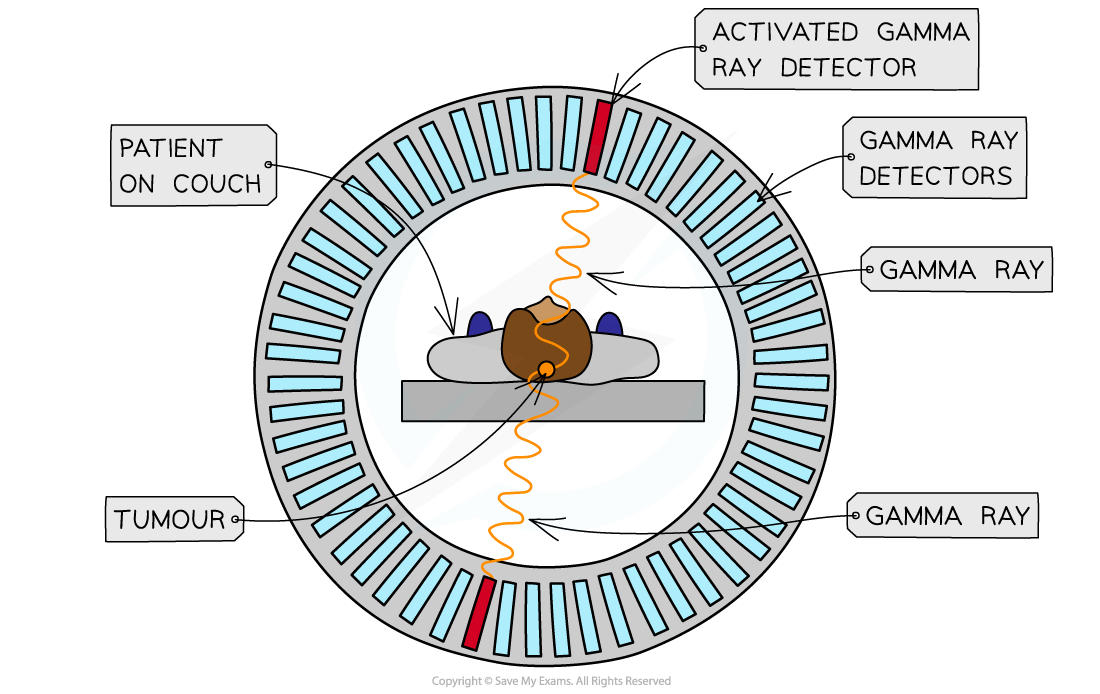Calculating Energy of Gamma-Ray Photons
- In the annihilation process, both mass-energy and momentum are conserved
- The gamma-ray photons produced have an energy and frequency that is determined solely by the mass-energy of the positron-electron pair
- The energy E of the photon is given by
- The momentum p of the photon is given by
- Where:
- me = mass of the electron or positron (kg)
- h = Planck's constant (J s)
- f = frequency of the photon (Hz)
- c = the speed of light in a vacuum (m s–1)
Worked example
Fluorine-18 decays by β+ emission. The positron emitted collides with an electron and annihilates producing two γ-rays.
(a) Calculate the energy released when a positron and an electron annihilate.
(b) Calculate the frequency of the γ-rays emitted.
(c) Calculate the momentum of one of the γ-rays.
Answer:
Part (a)
Step 1: Write down the known quantities
- Mass of an electron = mass of a positron, me = 9.11 × 10–31 kg
- Total mass is equal to the mass of the electron and positron = 2me
Step 2: Write out the equation for mass-energy equivalence
Step 3: Substitute in values and calculate energy E
Part (b)
Step 1: Determine the energy of one photon
- Planck's constant, h = 6.63 × 10−34 J s
- Two photons are produced, so, the energy of one photon is equal to half of the total energy from part (a):
Step 2: Write out the equation for the energy of a photon
Step 3: Rearrange for frequency f, and calculate
Part (c)
Step 1: Write out the equation for the momentum of a photon
Step 2: Substitute in values and calculate momentum, p


